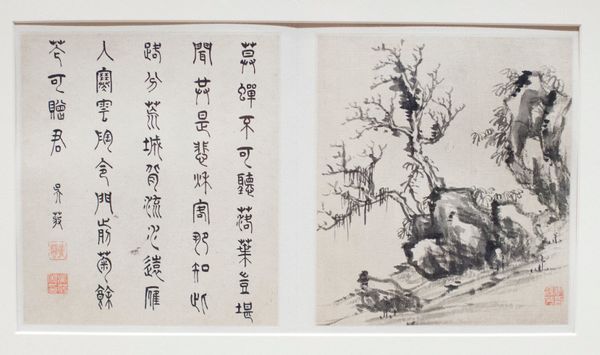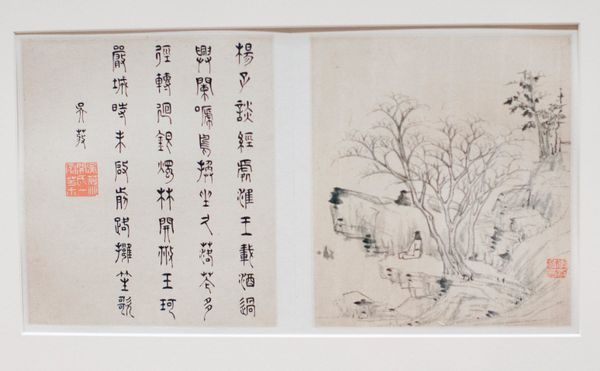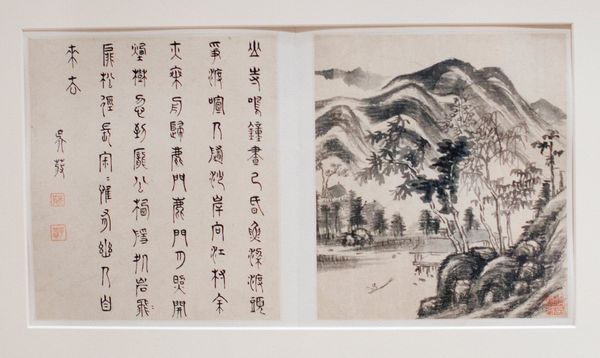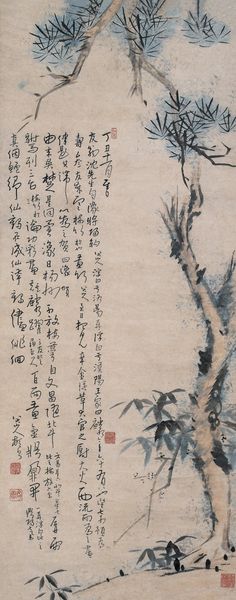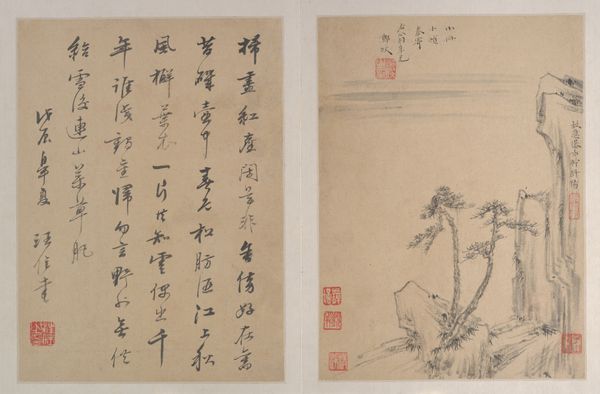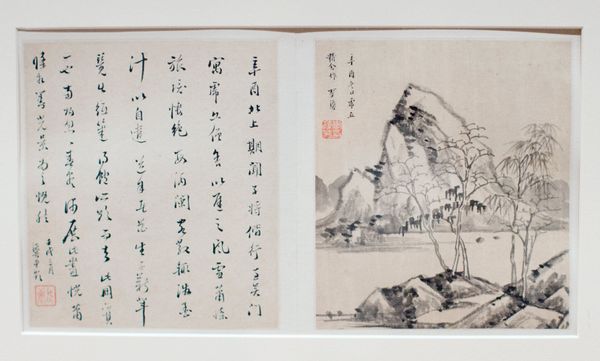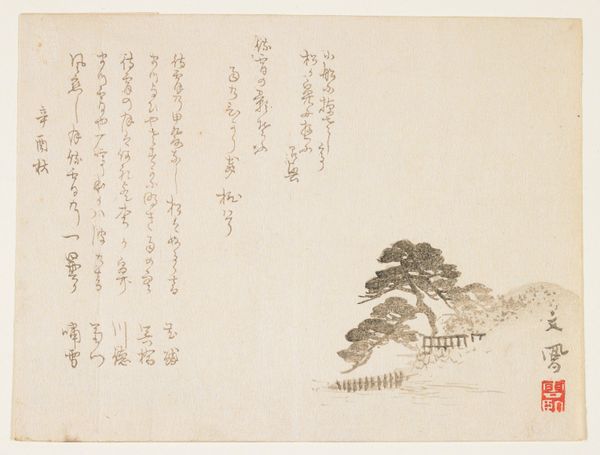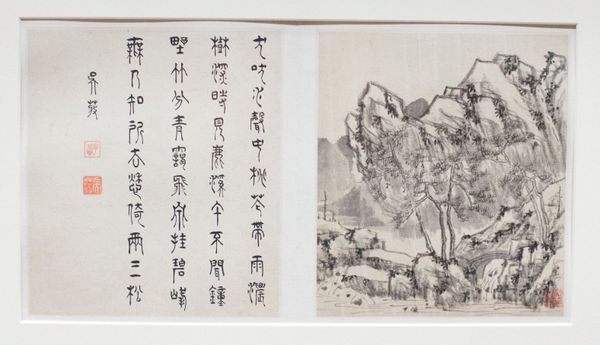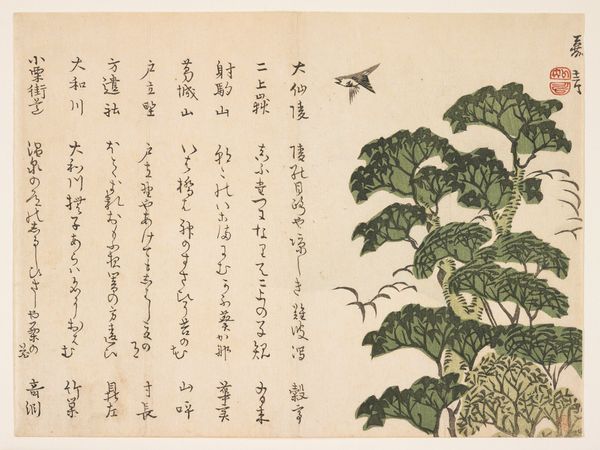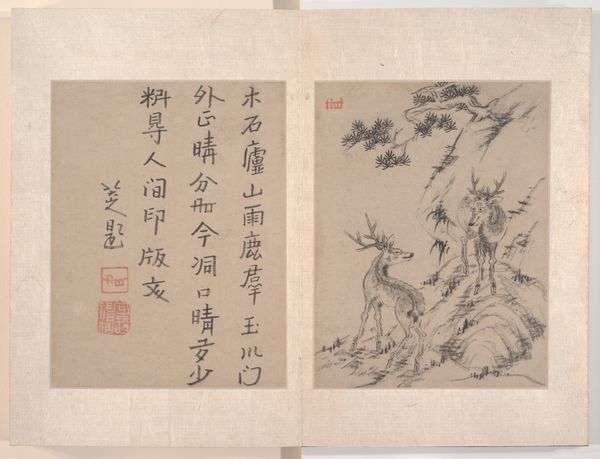
drawing, paper, ink-on-paper, ink
#
drawing
#
asian-art
#
landscape
#
paper
#
form
#
ink-on-paper
#
ink
#
line
#
calligraphy
Dimensions: 7 1/8 x 6 1/4 in. (18.1 x 15.88 cm) (image, each)10 15/16 x 16 3/4 in. (27.78 x 42.55 cm) (mount, overall)14 1/16 x 18 in. (35.72 x 45.72 cm) (mat)
Copyright: Public Domain
Editor: These two album leaves, made in 1621 by Li Liufang, offer a tranquil scene using ink on paper. I'm struck by how the calligraphy and landscape complement each other, but also feel somewhat separated. What symbolic meanings do you think are embedded in this composition? Curator: The separation you perceive might actually highlight the tension between the literati's life of scholarship and their yearning for natural simplicity. Notice how the calligraphy itself isn't merely text but carries calligraphic *presence*; in essence, word and image are of equal status. Does the writing perhaps evoke a narrative or poem that deepens your understanding? Editor: The calligraphy... I see some elements that seem to describe a journey and allude to nature. Curator: Exactly! The landscape imagery, particularly the trees, symbolizes endurance and resilience, mirroring the qualities the scholar-artist aspires to cultivate. Trees in East Asian art, particularly pine and bamboo varieties, represent virtues during times of adversity and the importance of introspection to retain them. Can you see how the positioning of the trees within the frame emphasizes this inward focus? Editor: Now that you mention it, they do seem deliberately placed to draw my eyes toward the center and then subtly upward. It's as though I'm being invited into their silent contemplation. Curator: And isn’t that the ultimate goal of such art: to invite you to recognize aspects of your self in what may seem to be an abstract or esoteric aesthetic from another place or time? Consider how personal journeys connect with shared history. Editor: I see. So the "separation" I initially sensed isn’t a flaw, but a carefully constructed space for personal reflection, bridged by symbols and artistic intent. Curator: Precisely. These leaves become a portal. Editor: This makes me appreciate the thoughtful composition a lot more. Curator: Indeed. It makes me think how the dialogue between text and image echoes dialogues between individuals seeking a better way.
Comments
minneapolisinstituteofart about 2 years ago
⋮
Li Liufang was a painter of the late Ming dynasty. He painted mostly in small formats, playing with ink and trying to channel the creative essence of certain old painting masters rather than copying their formal patterns. Most of his works look like improvised sketches, executed with fresh spontaneity. This album contains examples of Li’s early style—spare, linear compositions, in which he used less ink for thinner, fainter lines—as well as his later style, with its rich, inky brushwork.
Join the conversation
Join millions of artists and users on Artera today and experience the ultimate creative platform.
